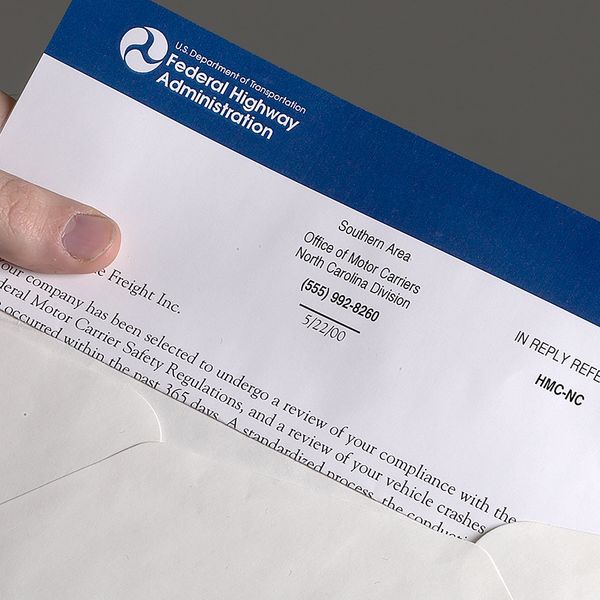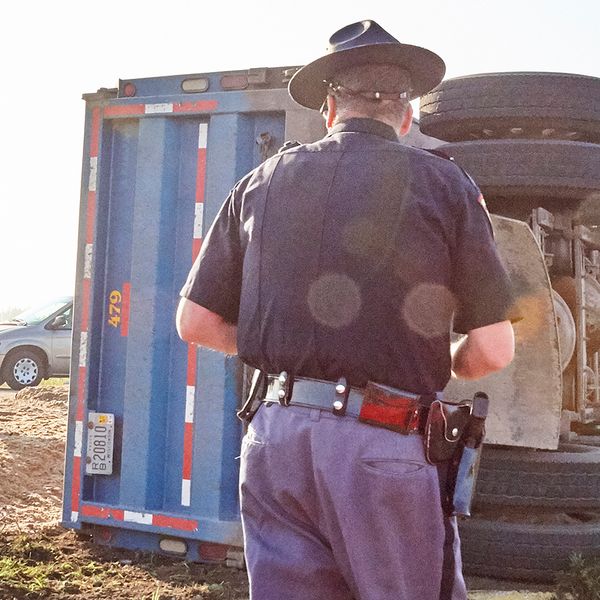FMCSA face-to-face audits back in vogue
If your carrier is targeted for a DOT audit, expect a visit from an investigator, rather than a records request for an offsite review.
In 2020, during the height of the COVID-19 pandemic, the number of offsite investigations increased 319 percent from 2019. In a reverse shift, there has been a 61 percent decline in offsite audits through 2023.
The numbers tell the story
The Federal Motor Carrier Safety Administration (FMCSA) Analysis & Information Online (A & I) tracks enforcement activities, including Compliance, Safety, Accountability (CSA) investigations. From 2021 through most of 2024, “onsite focused” was FMCSA’s most used CSA investigation type.
| Year | Onsite comprehensive | Onsite focused | Offsite |
| 2020 | 17% | 32% | 51% |
| 2021 | 19% | 41% | 40% |
| 2022 | 29% | 44% | 27% |
| 2023 | 34% | 48% | 18% |
| 2024 (through 9/27/24) | 37% | 48% | 15% |
Differences between CSA investigations
FMCSA’s CSA investigation types vary based on location and depth of the audit:
- Onsite comprehensive investigations are conducted at the carrier’s place of business and examine all areas of regulatory compliance. A comprehensive investigation may result in a safety rating and assessed penalties for any violations found.
- Onsite focused investigations are conducted at the carrier’s place of business and examine certain areas of compliance. They typically don’t result in a safety rating (unrated), but carriers could be fined for any violations found. Note that depending on which regulatory factors are examined, the audit could result in a Conditional or Unsatisfactory safety ratings.
- Offsite investigations are non-ratable investigations that are conducted remotely. These audits don’t result in a safety rating. But penalties may be assessed for any violations found, and the investigation can be converted to an Onsite Focused or Comprehensive Investigation.
Who is targeted for an investigation?
In most cases, the likelihood of an investigation is based the motor carrier’s safety data. Roadside inspection data and crash history are fed through algorithms to arrive at measures within Behavior Analysis and Safety Improvement Categories (BASICs). All but one BASIC place roadside violations into common groupings for scoring. The Crash Indicator BASIC uses the details of a crash to determine the likelihood of being another crash.
Each BASIC measure is compared against a motor carrier’s peers, and the motor carrier is assigned a percentile ranking. If the carrier exceeds a predetermined threshold, the carrier is subject to an intervention. Interventions range from warning letters to targeted roadside inspections to investigations.
Carriers are targeted for investigations when their CSA data identifies them as a high-risk carrier. How high of a risk determines the degree of investigation.
Note that compliance reviews (onsite comprehensive investigations) may occur following a serious commercial motor vehicle crash or a complaint lodged with the FMCSA about the motor carrier.
Key to remember: If selected for an investigation, odds are once again in favor of a face-to-face visit from FMCSA enforcement personnel.

















































